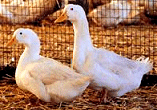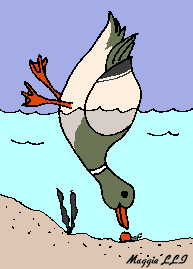Here is a great dementia resource for caregivers and healthcare professinals,
Here is a way for nurses administrators, social workers and other health care professionals to get an easyceu or two
Here is information on being the best caregiver you can be
Check out these duck facts by
Maggie because........find out be subscribing to the Activity Director Today E Magazine
What are ducks ?
Ducks are birds. They are also called "waterfowls" because they are normally found in places with water, like ponds, streams and rivers. They are related to geese and swans. The duck is the smallest of them all. Ducks also have shorter necks and wings and a stout body. They can live from 2-12 years, depending on breed.

Ducks have webbed feet, designed for swimming. Their webbed feet act like paddles for the ducks. A duck waddles instead of walks because of its webbed feet. Do you know that the duck's feet cannot feel cold even if it swims in icy cold water? Well, the reason for this is because its feet have no nerves or blood vessels
Water-proof feathers
Another special thing that the duck has is its water-proof feathers. There is a special gland that produces oil near the duck's tail which spreads and covers the outer coat of the duck's feathers, making it water-proof. Beneath the water-proof coat are fluffy and soft feathers to keep the duck warm.
How does a duck clean itself ?
Ducks keep clean by preening themselves. They do this by being able to turn their heads completely backwards, and putting their beaks into the feathers on their wings, breast and back. They preen themselves very often
Do you know what does a duck say ? quacking here. However, not all ducks quack. The Wood Duck does not quack, it gives out a "squeal" instead.
Ducks are birds. They are also called "waterfowls" because they are normally found in places with water, like ponds, streams and rivers. They are related to geese and swans. The duck is the smallest of them all. Ducks also have shorter necks and wings and a stout body. They can live from 2-12 years, depending on breed.
Ducks have webbed feet, designed for swimming. Their webbed feet act like paddles for the ducks. A duck waddles instead of walks because of its webbed feet. Do you know that the duck's feet cannot feel cold even if it swims in icy cold water? Well, the reason for this is because its feet have no nerves or blood vessels!
Another special thing that the duck has is its water-proof feathers. There is a special gland that produces oil near the duck's tail which spreads and covers the outer coat of the duck's feathers, making it water-proof. Beneath the water-proof coat are fluffy and soft feathers to keep the duck warm.
Ducks keep clean by preening themselves. They do this by being able to turn their heads completely backwards, and putting their beaks into the feathers on their wings, breast and back. They preen themselves very often.
Ducks give out a special sound. Listen to the sound of ducks
Ducks were once wild until they were domesticated by the Chinese over 1,000 There are still many different breeds of wild ducks.
 Most of the farm ducks are of a breed called "Pekin". It is harder to tell a male from a female with the Pekin ducks because they look almost the same. The male has two to three curly feathers on top. Pekin ducks have white or cream colored feathers and orange colored bills. These ducks do not fly and do well in captivity. They are also excellent for egg and meat production. The Pekin duck originated from China and is the most popular breed in the United States, having been first brought by ship from China to Long Island, New York in 1873.
Most of the farm ducks are of a breed called "Pekin". It is harder to tell a male from a female with the Pekin ducks because they look almost the same. The male has two to three curly feathers on top. Pekin ducks have white or cream colored feathers and orange colored bills. These ducks do not fly and do well in captivity. They are also excellent for egg and meat production. The Pekin duck originated from China and is the most popular breed in the United States, having been first brought by ship from China to Long Island, New York in 1873. How do they hunt for food ?
The duck's mouth is called a "bill". Normally, it is broad and flat and has rows of fine notches along the edge called "lamellae". The lamellae helps the duck to grip its food so that it will not slip off. However, ducks bills come in different shapes and sizes. The shape of the bill and body features will determine how the duck hunt for its food. Female Northern Shoveler
Male Northern Shoveler
Where are ducks found ?
Ducks are found in wetlands, marshes, ponds, rivers, lakes and oceans. This is because ducks love the water. Some species of ducks migrate or travel longs distances every year to breed. Usually they travel to warmer areas or where the water does not freeze so that they can rest and raise their young. The distance may be thousands of miles away. Ducks are found everywhere in the world except the Antarctica which is too cold for them.
 Ducks which have broad beaks, sift their food for insects, snails and seeds from the mud. These are called the shovelers. The Northern Shoveler is an example.
Ducks which have broad beaks, sift their food for insects, snails and seeds from the mud. These are called the shovelers. The Northern Shoveler is an example.  Some ducks have long and narrow beaks. The narrow beaks are also covered will with saw-like edges which help them to grab fish. Sea ducks usually have this kind of beak. Sea ducks are also divers. Examples are the Mergansers, Eiders, Harlequins, Goldeneyes and Buffleheads.
Some ducks have long and narrow beaks. The narrow beaks are also covered will with saw-like edges which help them to grab fish. Sea ducks usually have this kind of beak. Sea ducks are also divers. Examples are the Mergansers, Eiders, Harlequins, Goldeneyes and Buffleheads.  Some ducks do not dive for food. Their beaks are broad and short. They are called dabbling ducks or dabblers. They eat plants, seeds, grasses, small insects and animals that they find on or under the water.
Some ducks do not dive for food. Their beaks are broad and short. They are called dabbling ducks or dabblers. They eat plants, seeds, grasses, small insects and animals that they find on or under the water.  Usually they up-ends and stretch their heads into the water to reach their food. Dabblers usually have shiny colored patches on their wings. The domestic ducks are dabblers too. They are descendents of the Mallards. Dabbling ducks take off from the water in quick jumps. Examples of dabbling ducks are the mallards, cinnamon teals, shovellers, green and blue-winged teals, pintails, black ducks, baldpates and gadwalls.
Usually they up-ends and stretch their heads into the water to reach their food. Dabblers usually have shiny colored patches on their wings. The domestic ducks are dabblers too. They are descendents of the Mallards. Dabbling ducks take off from the water in quick jumps. Examples of dabbling ducks are the mallards, cinnamon teals, shovellers, green and blue-winged teals, pintails, black ducks, baldpates and gadwalls. Ducks with long necks dive their head down into the shallow water and pick up their food.
Ducks look different Wood Ducks, Muscovy Ducks and Mandarin Ducks.
Ducks of different breeds look different. Some are very colorful like the Perching ducks. They are called Perching ducks because they like to perch or rest in trees. Perching ducks are found in North America, tropical regions of Asia, Africa, Central and South America. Examples of Perching ducks are the
Another breed is the "Stiff-tailed" duck. Examples are the Ruddy Duck and the Masked Duck.
Ducks that come under the Pochards breed are the Canvasbacks, Ringnecks, Redheads and Lesser Scaups. They swim underwater with their wings closed and their legs sticking out to the sides. Their legs are closer to the rear end of their body compared to the other breeds of ducks. They run on the water surface before they lift-off and fly, just like an airplane!
The sea ducks' bills does not look like a duck's bill. It is long and narrow with sawlike edges for catching and holding on to a fish. Example is the Merganser.
Different Duck Species
The males (drakes) are usually the brightly colored ones while the females (ducks) are usually a dull-colored brown so that they can hide be camouflaged from their enemies when they are in their nests.

Wood duck pair.
Ducks usually look for a mate or partner in winter. The males will attract the females with their colorful plumage or feathers. The females will then lead the males to their breeding ground in spring. Instinctively, the breeding ground will usually be the place where she was hatched � it�s as if they have a built-in homing device. The female builds her nest with grass or reeds or even in a hole in a tree. The male will guard their territory by chasing away other couples. Once the female lays 5-12 eggs, she will start to sit on her eggs to keep it warm so that they can hatch into ducklings. The males on the other hand, will be with the other males. The eggs will hatch within 28 days normally, except for the Muscovy which takes about 35 days to hatch.
The mother duck will keep her brood of ducklings together to protect them from predators. Animals like the raccoon, turtles, hawks, large fish and snakes will eat the ducklings. Ducklings are able to fly within 5-8 weeks. Their feathers develop really fast. When the young are ready to fly, all the ducks will gather in flocks on large lakes, marshes or the ocean to migrate to their wintering home. When the ducks fly, they usually do so in a "V-shaped" formation or a long line.
The production of eggs is affected by daylight. When there is more daylight, the ducks will lay more eggs. In the months of July to December when daylight is short, they slow down their production of eggs. Sometimes, they stop laying eggs completely during these months. To prevent this from happening, farmers use artificial lighting so that the ducks have about 17 hours of light a day to produce eggs efficiently.
 Ducks, like other animals, are useful to human beings. They provide us with eggs and meat to eat. Some ducks provide us with feathers are used for stuffing quilts and pillows. The feathers are usually from the Eider duck. Thus, the name "eiderdown" for stuffed quilts. To line their nests, the females pluck feathers from their breast. Their feathers are harvested in Iceland where they are found everywhere along the coast and are a valuable source of income for the people here. Eiders feed on mussels, sea snails, crabs, shrimps, barnacles, catch fish, dig for snails and eat other small crustaceans and some sea-weeds.
Ducks, like other animals, are useful to human beings. They provide us with eggs and meat to eat. Some ducks provide us with feathers are used for stuffing quilts and pillows. The feathers are usually from the Eider duck. Thus, the name "eiderdown" for stuffed quilts. To line their nests, the females pluck feathers from their breast. Their feathers are harvested in Iceland where they are found everywhere along the coast and are a valuable source of income for the people here. Eiders feed on mussels, sea snails, crabs, shrimps, barnacles, catch fish, dig for snails and eat other small crustaceans and some sea-weeds. 











